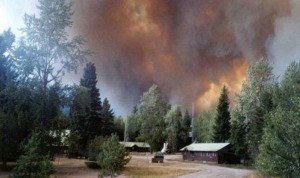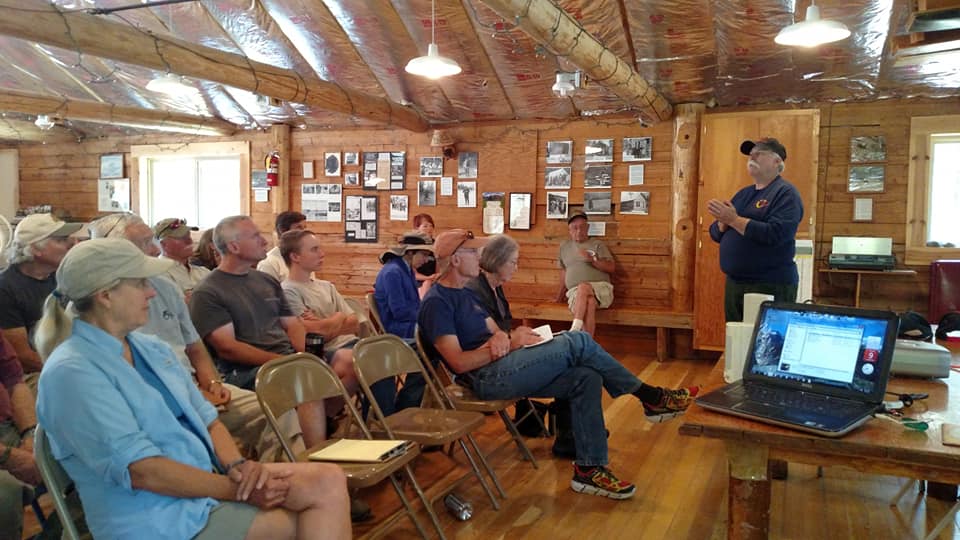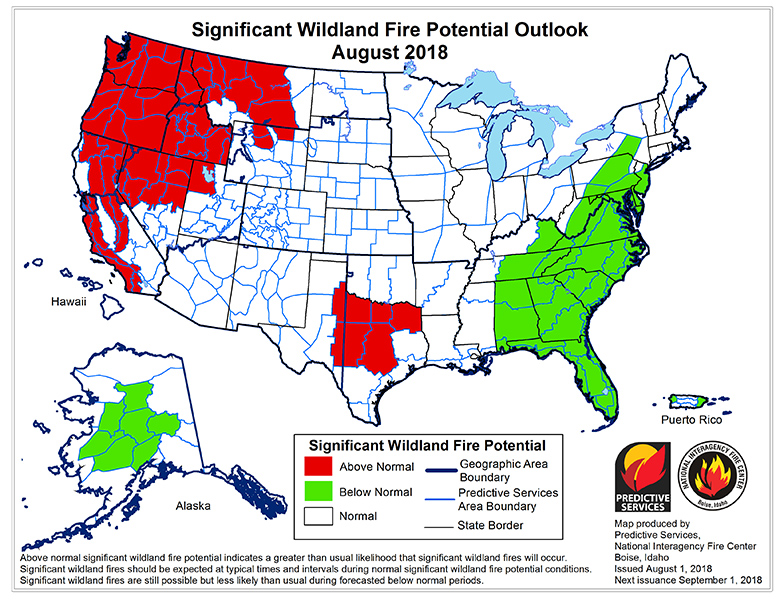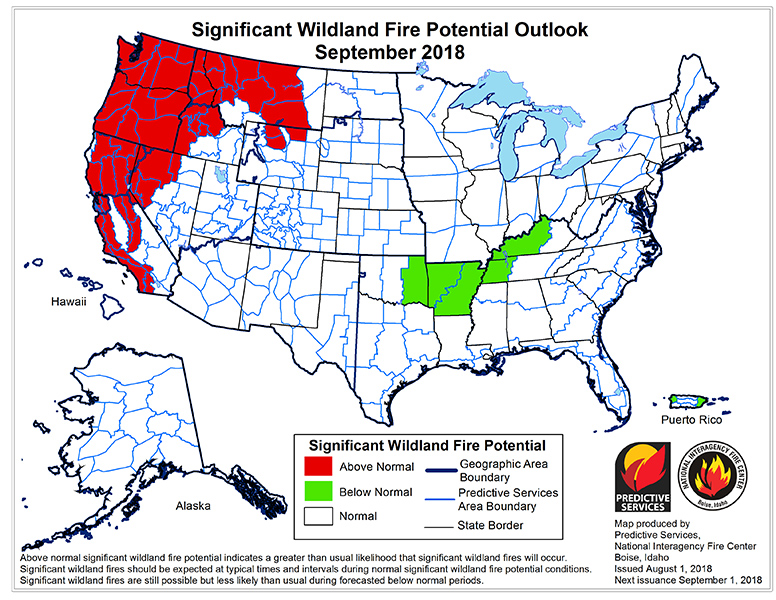The Current Wildland Fire Potential Outlook has been posted, and it refines the forecast for our fire season in Northwest Montana. We did see benefit from the significant moisture received over the past two weeks, so our season will be delayed until later in July. That is good news. But August and September are still forecast to be Above Normal Fire Activity for Northwest Montana.
Here is the important stuff for the Northern Rockies:
“Normal fire potential is now anticipated to continue through most of July due to the recent passage of moist, Pacific troughs and beneficial precipitation in the latter half of June and forecast to continue in a weaker version by various CPC outlooks into the middle of the month. In late July and August, Above Normal significant wildland fire potential is anticipated to develop in all the Western PSAs 01-09 and expand eastward into central and southeastern Montana, possibly as far east as western North Dakota. One reason is the predicted monsoonal lightning pattern which could be robust under a strong ridge of high pressure during that time with above average potential lightning ignitions in dry fuel beds. Above Normal potential will continue for those same areas in September with the outlooks calling for warmer and drier than average conditions.”
August and September will be busy for us. Be prepared!
Here is the link for the entire report: https://www.nifc.gov/nicc/predictive/outlooks/monthly_seasonal_outlook.pdf






